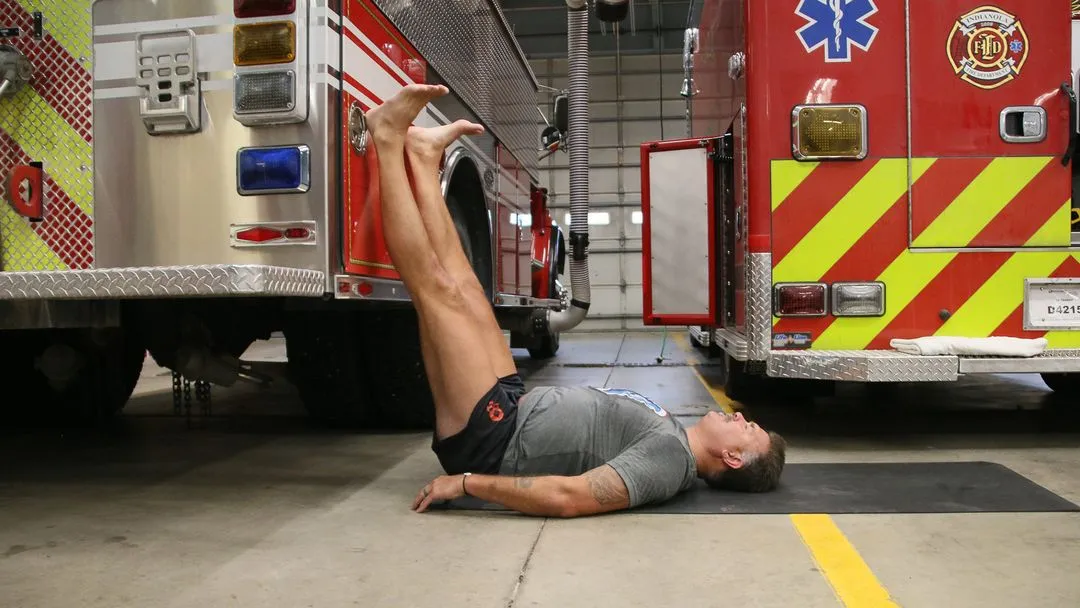

First responders deserve all the awards and accolades we could possibly give them.
If we took all the trophies from all the Oscars combined and gave them to first responders, it wouldn’t even begin to represent the respect, love, and support they deserve. And it certainly wouldn’t make up for how often these amazing superhumans are taken for granted.
Firefighters, 911 dispatchers, EMT’s, paramedics, and law enforcement officers. They’re all on the frontlines for us. Every day.
An estimated 30% of first responders develop behavioral health conditions like PTSD, anxiety, and depression, compared to 20% for the general population.
The mental health resources needed to help first responders process the trauma they see and experience on a daily basis are almost nonexistent.
This is why a regular yoga practice is so important for these superheroes.
If you haven’t checked out one of our recent posts on How Yoga Saves Lives, you may want to read about our thoughts on the healthcare worker crisis in America and across the world right now.
Because for first responders to keep doing what they do best, they need resources to help them navigate their life better, similar to healthcare workers.
Here’s how yoga can help these specific helpers!
The on-the-job experiences of first responders is largely responsible for their personal turmoil.
As discussed previously, firefighters, EMS personnel, dispatchers, and police officers are all highly susceptible to PTSD, anxiety, depression, and are more likely to have substance abuse problems or commit suicide.
As such, first responders may exhibit erratic behaviors, sudden onset of rage. They may startle more easily than civilians. They may be subject to more nightmares, sleep disturbances, and they may not be able to control their emotions well in their personal lives.
Yoga for first responders is medicine for their weary souls.
Here are some facts about yoga that make it a perfect resource and tool for first responders:
A first responder’s job often affects their personal life, their relationships with others, and their connection to their inner self. Because first responders tend to compartmentalize their work life and what they see and experience on the job (versus processing it), all of that trauma often overwhelms them.
We definitely recommend regular meditation and breathwork for this group of amazing humans.
As we’ve discussed in previous posts, this particular group of people use their bodies a lot. They are sitting, standing, crawling, running, twisting, lifting, squatting. Often while carrying heavy equipment.
Their job puts a lot of strain on their joints, muscles, and frame.
Firefighters, in particular, tend to suffer injury from their job, often in ways people don’t see. Like in their lungs.
While they do wear masks, firefighters are obviously exposed to smoke and air particle debris more than any other type of first responder, and definitely more than a civilian.
A regular yoga practice not only helps first responders stretch, strengthen, and tone their muscles so their bodies can move in all the ways they need it to, the breathwork included in almost every yoga practice helps improve lung function.
Because yoga is so versatile and adaptable, breathwork and meditation (and even some yoga poses) can be done lying down in bed!
In as little as 10 minutes, you can bring more awareness, calm, and harmony to your inner and outer self so that you can function better throughout the day. This kind of convenience is a huge deal for first responders!
Starting out their day in a healthy state of mind with a body that is limber prevents mental and physical injury, whether they’re at work or not. Yoga is just an amazing way to start your day and a regular practice for first responders helps them process their world in a healthier way.
Which means better relationships with others and more inner peace.
Regular mindful breathwork also:
The healthier first responders can keep their bodies, the better!
This sounds like it should be a blog post all it’s own. But we definitely wanted to stress the importance of a regular yoga practice for first responders.
And many times there are misconceptions about yoga that lead people to believe that it won’t work for them, or rather that yoga “isn’t for them.”
The truth is, yoga is for everyone, but especially for people in high risk, adrenaline pumping jobs like first responders. So here are 5 reasons why they should seriously consider integrating a regular yoga practice into their routine.
Here at MyYogaTeacher, we offer a huge variety of of yoga classes and workshops for people from all walks of life, all shapes, sizes, and abilities. Not only that, but all our classes are taught live and virtually (and at all times of day and night) so you can experience them from wherever in the world you may be!
Additionally, our classes are taught by experienced expert instructors from the birthplace of yoga, India. And they all truly care about your health and wellbeing. If you haven’t jumped on the My Yoga Teacher bandwagon yet, we would love to have you! Get your 2-week free trial here and join us!

Receive personalized guidance tailored to your unique fitness goals, live with a dedicated coach—no credit card required.